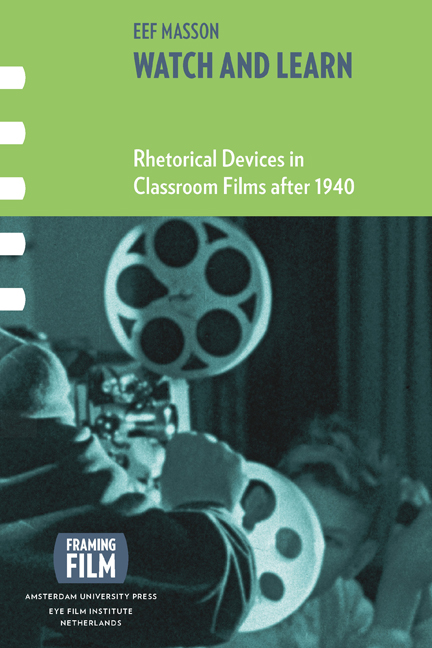1 - Film for Education: Debates, Idea(l)s and Practices
Published online by Cambridge University Press: 20 January 2021
Summary
INTRODUCTION
On 6 May 1941, about a year after the Nazi occupation of the Netherlands had begun, the Dutch Ministry of Education, Arts and Sciences ratified the establishment of a new public body: Stichting Nederlandse Onderwijs Film or NOF. The foundation's remit was to centrally organise the production, acquisition and distribution of films for primary and early secondary education in Holland. The establishment of the new institute was an ambitious enterprise. In previous decades, attempts had been made to facilitate the use of film for teaching, but never before on such a scale. After a mere four years of operation, NOF boasted sixty-five employees and claimed that it had distributed films to about 1,000 schools. Supposedly, 4,000 teachers from all parts of the country, dealing with 100,000 pupils among them, had made use of the new didactic aid. However, the institute itself took more pride in the fact that it offered purpose-produced materials. Its representatives claimed that unlike previous initiatives in the field, it provided titles designed specifically to match the official school curricula ([Schreuder] 1948, 8).
Although NOF emphatically dissociated itself from all earlier forms of educational film use – and most notably, from the so-called ‘school cinema’ system of the 1920s and 1930s – the texts in which it praised its goods and services contain arguments that are much older. The claims it made derive from public debates that had emerged several decades earlier, and that involved not only film entrepreneurs and pedagogues, but representatives of a much wider array of social pressure groups. These discussions, dating back to the beginning of the century, are marked by a tension between two sets of convictions. On the one hand, primary sources attest to an awareness of, and in some cases, to an almost unconditional belief in, the unprecedented didactic potential of film. On the other hand, they show apprehension of the dangers attached to what was taken to be a ‘transfer’ of the medium from an entertainment context to a traditional educational environment (especially if in unmodified form). The same opposition also manifests itself in the way in which NOF presented itself to its users, and in its day-to-day production and acquisition policies.
- Type
- Chapter
- Information
- Watch and LearnRhetorical Devices in Classroom Films after 1940, pp. 27 - 98Publisher: Amsterdam University PressPrint publication year: 2012
- 1
- Cited by



